Table of Contents
ToggleOcean Pollution Facts
When people talk about environmental threats, ocean pollution facts often stand as some of the most alarming truths of our time. Our oceans cover more than 70% of the Earth’s surface, providing food, oxygen, and climate regulation, yet they are being choked by waste, chemicals, and human negligence. Understanding the reality behind ocean pollution facts is crucial for developing solutions that protect marine ecosystems and ensure the planet’s long-term survival. The ocean is not just a vast body of water—it is a living system that supports billions of lives. However, human activities have turned it into a dumping ground, with devastating consequences for wildlife, habitats, and even human health.
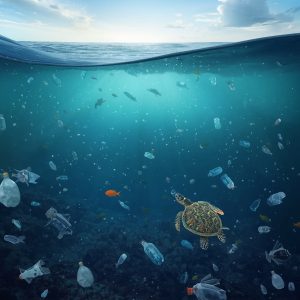
The Growing Threat Beneath the Waves
One of the most shocking ocean pollution facts is that over 8 million tons of plastic enter the seas each year. This staggering number highlights humanity’s overreliance on single-use plastics and poor waste management systems. The marine plastic crisis is now one of the biggest environmental challenges of our era. Plastic bottles, bags, and microbeads break down into smaller pieces but never fully disappear, posing lethal threats to marine life. Fish, seabirds, and turtles often mistake these tiny particles for food, leading to internal injuries, starvation, and death.
Another important ocean contamination issue is chemical pollution. Agricultural runoff, oil spills, and untreated sewage flow into rivers and eventually reach the ocean, creating “dead zones” where oxygen levels are so low that most marine life cannot survive. Fertilizers, pesticides, and industrial waste all contribute to this deadly phenomenon. The Gulf of Mexico, for instance, contains one of the largest dead zones on the planet—covering thousands of square miles—caused by nutrient-rich runoff from farms along the Mississippi River.
Oil pollution adds another layer of harm. While catastrophic spills like the Deepwater Horizon disaster capture headlines, everyday oil leaks from ships, pipelines, and coastal industries are constant contributors. These spills coat marine animals in toxic slicks, destroy coral reefs, and contaminate coastal ecosystems. The cumulative effects of these pollutants create a toxic cocktail that spreads through food chains and impacts both marine and terrestrial life.
How Plastic Pollution Changes Marine Ecosystems
When discussing ocean pollution facts, the issue of microplastics in the sea deserves special attention. Microplastics—tiny fragments less than 5 millimeters in size—have been found everywhere from the deepest ocean trenches to Arctic ice. They originate from the breakdown of larger plastic waste, synthetic clothing fibers, and cosmetic products. The frightening truth is that microplastics are now present in nearly every species of marine life studied, including fish that humans consume.
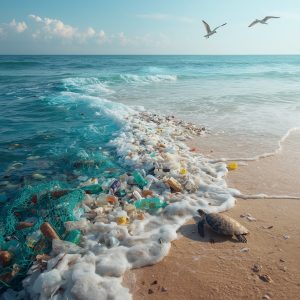
One of the major plastic waste impacts is bioaccumulation. Toxic chemicals adhere to plastic particles, which are then ingested by plankton, small fish, and eventually larger predators. As these toxins move up the food chain, they become more concentrated, affecting not only wildlife but also humans who eat seafood. Studies have detected microplastics and plastic-related chemicals in human blood and organs, raising serious concerns about long-term health consequences.
Another underreported ocean degradation reality is how plastic waste interferes with marine ecosystems’ physical structure. Coral reefs, for instance, are being smothered by floating plastic debris. These corals are vital breeding grounds for fish and protect coastlines from erosion, but plastic pollution damages their delicate polyps and blocks the sunlight essential for photosynthesis. Meanwhile, sea turtles suffer as they mistake plastic bags for jellyfish, their primary food source. This results in intestinal blockages and a slow, painful death.
Beyond wildlife, plastic pollution disrupts entire ecosystems by altering nutrient cycles and oxygen availability. Floating debris shades sunlight from plankton, affecting photosynthesis rates that help produce nearly half the world’s oxygen. The chain reaction triggered by these disruptions threatens the balance of marine biodiversity, which has evolved over millions of years.
The Human Connection to Ocean Pollution
Many people fail to realize how deeply ocean pollution is linked to human life. The oceans are the world’s largest carbon sink, absorbing roughly a quarter of all CO₂ emissions. When polluted, their ability to regulate the global climate weakens, accelerating global warming. One significant marine ecosystem threat is the destruction of phytoplankton populations due to toxic waste and chemical runoff. Phytoplankton not only absorb carbon but also produce the oxygen that sustains much of life on Earth.
Coastal communities are also directly affected. Polluted beaches reduce tourism, while contaminated seafood threatens public health. Heavy metals like mercury, lead, and cadmium—often released from industrial waste—accumulate in fish and shellfish. When consumed, they can cause neurological and developmental damage, particularly in children. This issue highlights the global environmental health link, showing that what harms the ocean ultimately harms humanity.
Another often-overlooked pollution consequence is the economic impact. The fishing industry loses billions each year due to damaged ecosystems, reduced fish stocks, and the costs of cleaning debris from nets and boats. Moreover, oil spills and waste contamination force governments to spend millions on cleanup operations and habitat restoration. These are not distant problems—they directly influence livelihoods, food prices, and national economies.
Human activities such as overfishing and deep-sea mining further intensify ocean stress. The extraction of minerals from the seabed disrupts habitats and releases harmful sediments into surrounding waters. Meanwhile, ghost fishing gear—lost or discarded nets—continues to trap marine animals for years, creating what many call “silent killers” of the deep. The combination of physical, chemical, and biological stressors makes ocean restoration increasingly challenging.
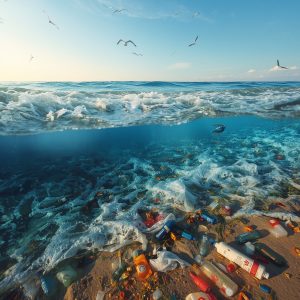
Efforts and Innovations to Reduce Ocean Pollution
Despite the grim reality, there is hope. Understanding ocean pollution facts has sparked a global movement toward ocean conservation and sustainable practices. Governments, NGOs, and individuals are working together to develop innovative solutions. For instance, beach cleanup campaigns have become widespread, raising awareness and removing tons of waste annually. The Ocean Cleanup Project, a large-scale initiative, uses advanced technology to collect plastic debris from the Great Pacific Garbage Patch—a massive area of floating waste twice the size of Texas.
Many countries are also enforcing bans on single-use plastics, promoting biodegradable materials, and encouraging recycling systems that prevent waste from reaching the sea. Industries are being held accountable through stricter environmental regulations, and corporations are pledging to reduce plastic packaging. These environmental preservation actions signal a global shift toward sustainability.
In the scientific realm, researchers are exploring natural solutions like bioremediation, where microorganisms break down oil and plastic pollutants. Similarly, eco-engineering projects use oysters, mangroves, and seagrasses to restore coastal health and filter pollutants. Meanwhile, public awareness campaigns are educating communities about responsible waste disposal and the importance of reducing plastic dependency.
Individuals play a vital role as well. Simple actions like refusing single-use plastics, supporting ocean-friendly brands, and participating in local cleanup events can collectively make a significant impact. Moreover, sustainable seafood choices and supporting policies that prioritize environmental protection help ensure long-term ocean health. The collective message is clear: reversing ocean pollution requires both systemic change and individual responsibility.
What the Future Holds for Our Oceans
Looking ahead, the future of the world’s oceans will depend on how humanity responds to the growing list of ocean pollution facts. Scientists warn that if current trends continue, there will be more plastic than fish in the ocean by 2050. This prediction underscores the urgency of immediate action. However, innovation and global cooperation provide a path forward. The rise of blue economy initiatives aims to balance economic growth with marine conservation, ensuring that ocean resources are used sustainably.
International collaborations such as the United Nations’ “Decade of Ocean Science for Sustainable Development” are mobilizing research efforts to protect marine biodiversity and develop technologies that reduce pollution. Educational reforms are also key—teaching the next generation about marine sustainability awareness will build a culture of environmental responsibility.
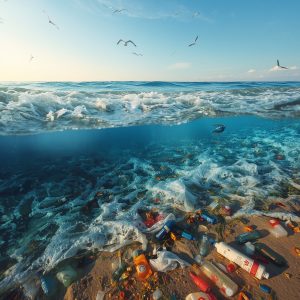
Another emerging trend is the shift toward circular economies, where products are designed to be reused or recycled rather than discarded. This model can drastically reduce plastic waste and lessen the pressure on marine environments. Furthermore, advances in renewable energy, such as offshore wind and wave power, offer cleaner alternatives that minimize fossil fuel-related ocean pollution.
Ultimately, the future health of the oceans depends on global commitment. The world must view the oceans not as dumping grounds, but as vital ecosystems that sustain all life. Protecting them requires a combination of science, policy, and moral responsibility. It also demands that people understand the link between their daily choices and the planet’s well-being.
Conclusion
The truth revealed by ocean pollution facts is both sobering and motivating. Our oceans are suffocating under the weight of plastic, chemicals, and waste, yet they continue to give us life, food, and stability. Recognizing this paradox should ignite a sense of duty in everyone—from policymakers and industries to everyday individuals. The fight against ocean pollution is not just about saving marine life; it is about safeguarding our collective future.
By making mindful decisions—reducing plastic use, supporting sustainable products, and advocating for stronger environmental protections—we can reverse much of the damage already done. Every river that stays clean, every beach kept free of litter, and every plastic bottle replaced with a reusable one contributes to global restoration.
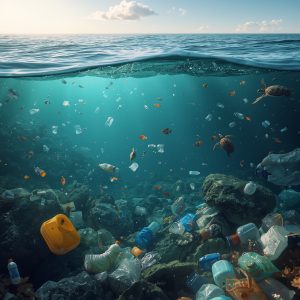
The oceans have always been symbols of mystery and power, but today, they symbolize our shared responsibility. If humanity acts now with unity and purpose, the world’s seas can once again thrive as the heart of our planet’s living system. The challenge is immense, but the rewards—clean waters, vibrant ecosystems, and a balanced planet—are beyond measure. Protecting the ocean is protecting ourselves, for without healthy seas, there can be no healthy Earth.
